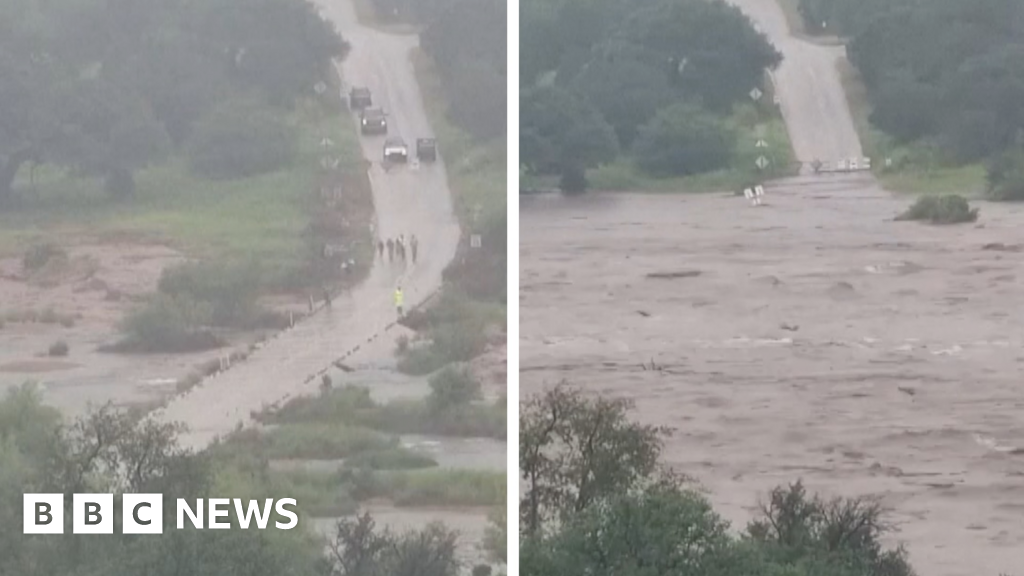A new study by planetary scientists at Brown University and the University of Bern in Switzerland casts doubt on one of the most tantalizing clues that water might be flowing on present-day Mars.
For years, scientists have spied strange streaks running down Martian cliffsides and crater walls. Some have interpreted those streaks as liquid flows, suggesting the possibility of currently habitable environments on the Red Planet. But this new study, which used machine learning to create and analyze a massive dataset of slope streak features, points to a different explanation: dry process related to wind and dust activity.
“A big focus of Mars research is understanding modern-day processes on Mars—including the possibility of liquid water on the surface,” said Adomas Valantinas, a postdoctoral researcher at Brown who coauthored the research with Valentin Bickel, a researcher at Bern.
“Our study reviewed these features but found no evidence of water. Our model favors dry formation processes.”
The research is published in Nature Communications.
Scientists first saw the odd streaks in images returned from NASA’s Viking mission in the 1970s. The sinewy features are generally darker in hue than the surrounding terrain and extend for hundreds of meters down sloped terrain.
Some last for years or decades, while others come and go more quickly. The shorter-lived features—dubbed recurring slope lineae (RSL)—seem to show up in the same locations during the warmest periods of the Martian year.
The origin of the streaks has been a hot topic among planetary scientists. Modern Mars is remarkably dry, and temperatures rarely peak above freezing. Still, it’s possible that small amounts of water—perhaps sourced from buried ice, subsurface aquifers or abnormally humid air—could mix with enough salt to create a flow even on the frozen Martian surface. If true, RSLs and slope streaks could mark rare, habitable niches on a desert world.
Other researchers haven’t been convinced. They contend the streaks are triggered by dry processes like rock falls or wind gusts, and only appear liquid-like in orbital images.
Hoping for new insights, Bickel and Valantinas turned to a machine learning algorithm to catalog as many slope streaks as they could. After training their algorithm on confirmed slope streak sightings, they used it to scan more than 86,000 high-resolution satellite images.
The result was a first-of-its-kind global Martian map of slope streaks containing more than 500,000 streak features.
“Once we had this global map, we could compare it to databases and catalogs of other things like temperature, wind speed, hydration, rock slide activity and other factors.” Bickel said.
“Then we could look for correlations over hundreds of thousands of cases to better understand the conditions under which these features form.”
This geostatistical analysis showed that slope streaks and RSLs are not generally associated with factors that suggest a liquid or frost origin, such as a specific slope orientation, high surface temperature fluctuations or high humidity.
Instead, the study found that both features are more likely to form in places with above average wind speed and dust deposition—factors that point to a dry origin.
The researchers conclude that the streaks most likely form when layers of fine dust suddenly slide off steep slopes. The specific triggers may vary. Slope streaks appear more common near recent impact craters, where shockwaves might shake loose surface dust. RSLs, meanwhile, are more often found in places where dust devils or rockfalls are frequent.
Taken together, the results cast new doubt on slope streaks and RSLs as habitable environments.
That has significant implications for future Mars exploration. While habitable environments might sound like good exploration targets, NASA would rather keep its distance. Any earthly microbes that may have hitched a ride on a spacecraft could contaminate habitable Martian environments, complicating the search for Mars-based life.
This study suggests that the contamination risk at slope streak sites isn’t much of a concern.
“That’s the advantage of this big data approach,” Valantinas said. “It helps us to rule out some hypotheses from orbit before we send spacecraft to explore.”
More information:
Nature Communications (2025). DOI: 10.1038/s41467-025-59395-w www.nature.com/articles/10.1038/s41467-025-59395-w
Citation:
Streaked slopes on Mars probably not signs of water flow, study finds (2025, May 19)
retrieved 19 May 2025
from
This document is subject to copyright. Apart from any fair dealing for the purpose of private study or research, no
part may be reproduced without the written permission. The content is provided for information purposes only.

















